Are you looking to improve your manuscript but not sure where to start? Our comprehensive manuscript appraisal feedback letter template is designed to help you dissect your work with clarity and constructive insight. Whether you're a first-time author or a seasoned writer, this template offers a structured approach to receiving valuable critiques that can elevate your writing. Dive into our article to discover how to make the most of feedback and enhance your manuscript!
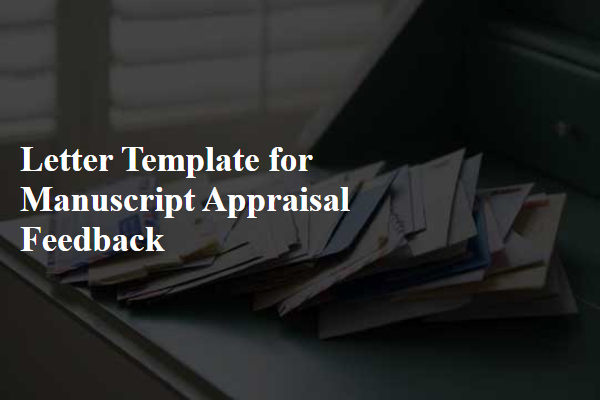
Clarity and coherence of argument
The manuscript presents a compelling exploration of the chosen topic, featuring a well-structured argument that guides the reader through complex ideas. Each section builds on the previous one, enhancing overall clarity and maintaining coherence throughout the discourse. Key themes are articulated with precision, allowing for an insightful understanding of the subject matter. Transitional elements between paragraphs seamlessly connect various points, reinforcing the logical progression of the argument. The use of clear definitions for essential terms further aids comprehension, ensuring that the reader remains engaged and informed. Overall, the clarity of the argument supports a thorough analysis, making the manuscript a valuable contribution to its field.
Quality and depth of research
Manuscript appraisal feedback emphasizes the quality and depth of research conducted within the study. Comprehensive literature reviews identify key studies published within the last five years, illustrating a robust understanding of the current state of the field. Methodology sections detail experimental designs, sample sizes (with statistical significance noted), and data collection techniques, ensuring replicability. Results present thorough analyses accompanied by relevant statistical tests such as ANOVA or regression models, highlighting significant findings clearly. Discussion aligns with previous literature while addressing potential gaps or limitations, demonstrating critical thinking. Overall, the manuscript showcases strong investigative rigor, contributing valuable insights into the topic area.
Originality and significance of the contribution
The originality and significance of a manuscript's contribution are critical factors in its appraisal within academic communities. An innovative study presents unique findings that advance knowledge or challenge existing paradigms, often addressing gaps identified in previous literature. For instance, a research project exploring the effects of climate change on marine biodiversity can provide fresh insights, contributing to fields like environmental science and marine ecology. Additionally, the significance of the contribution also hinges on its relevance to societal issues, policy-making, or global challenges. A manuscript highlighting the impact of urbanization on mental health could be considered significant due to its implications for public health initiatives and urban planning strategies. Overall, evaluating the originality and significance entails examining the manuscript's potential to influence further research, inspire interdisciplinary collaborations, or enhance understanding in a specific area of study.
Consistency and adherence to journal guidelines
A well-structured manuscript that adheres to specific journal guidelines is crucial for its acceptance. Consistency in formatting, including font type, font size (typically 12-point), and margins (usually 1 inch), ensures a professional presentation, widely recognized in academic journals. Each section, from the abstract to the reference list, must align with the journal's specifications regarding length and style. In specific cases, such as the American Psychological Association (APA) or Modern Language Association (MLA) styles, publication standards dictate clear protocols for citations and references, which are essential for maintaining credibility. Furthermore, consistent terminology and nomenclature throughout the document are vital for clarity, helping reviewers and readers understand the research context without confusion. Adhering closely to these guidelines reflects a commitment to professionalism and increases the likelihood of a favorable appraisal.
Relevance and alignment with journal scope and audience
The manuscript received for appraisal demonstrates a clear relevance to the journal's scope, focusing on the critical intersection of technology and education. The study on adaptive learning technologies highlights significant advancements in personalized learning methods, addressing current educational challenges faced globally, particularly in urban settings like New York City. Targeting a diverse audience of educators, researchers, and policymakers, the findings contribute to ongoing discussions about equitable access to educational resources. Additionally, the manuscript aligns with the journal's commitment to fostering innovative practices within the academic community, ensuring that the research can influence future developments in educational technology and best practices in pedagogy.
Letter Template For Manuscript Appraisal Feedback Samples
Letter template of manuscript appraisal feedback for academic publications
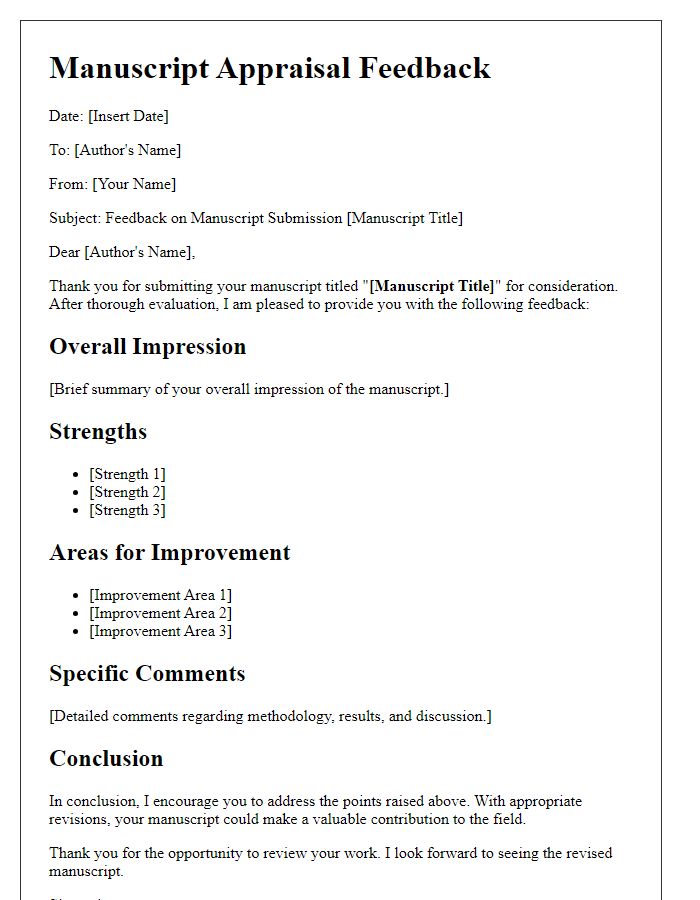

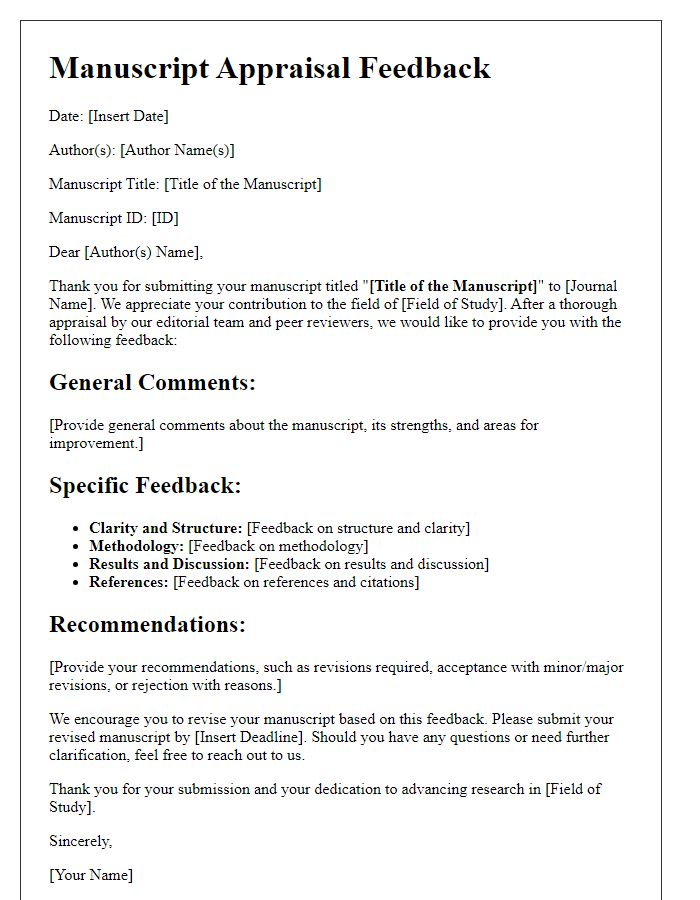
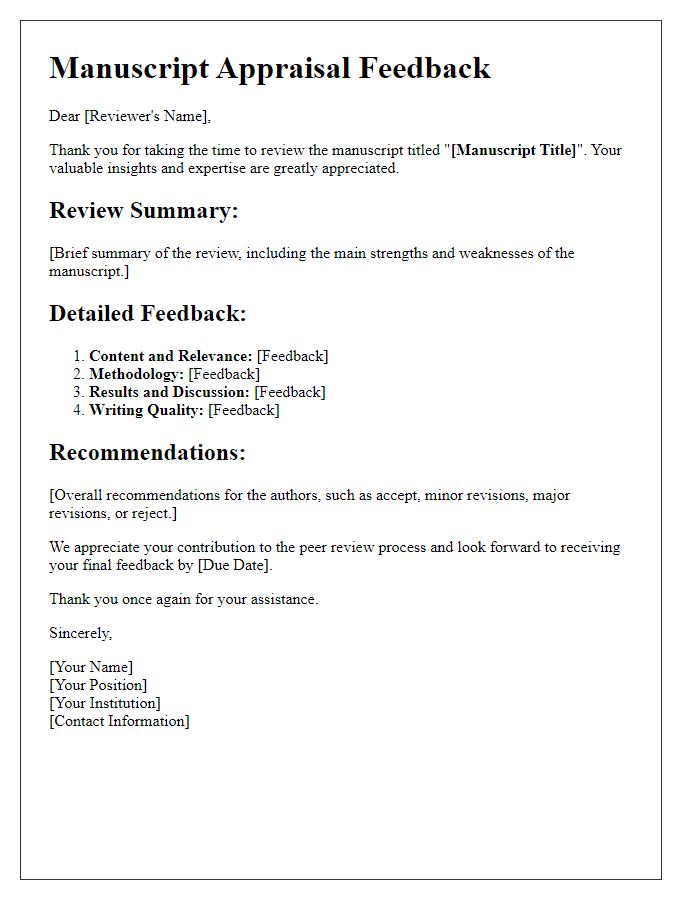
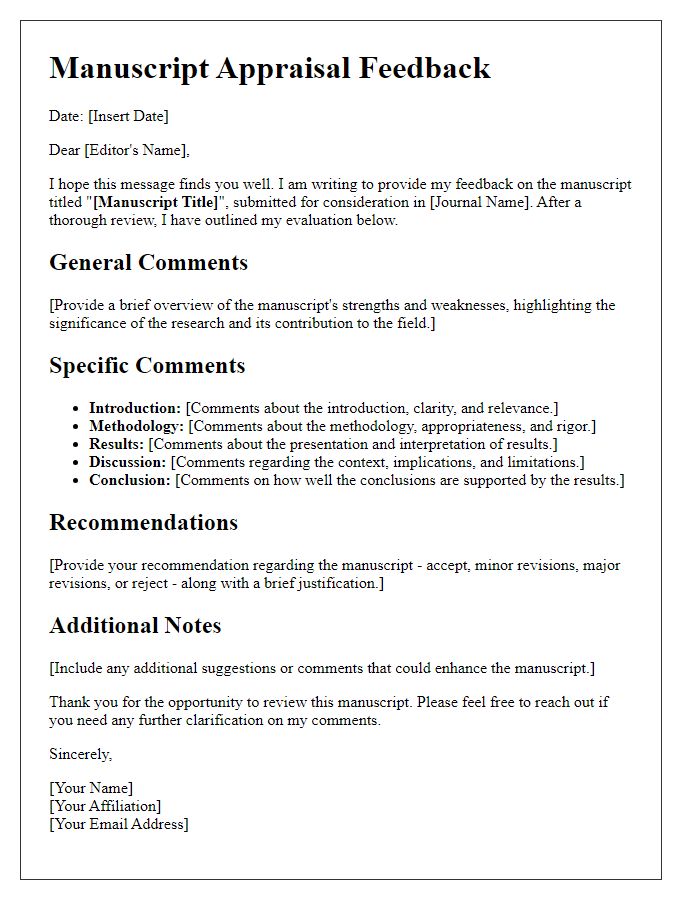
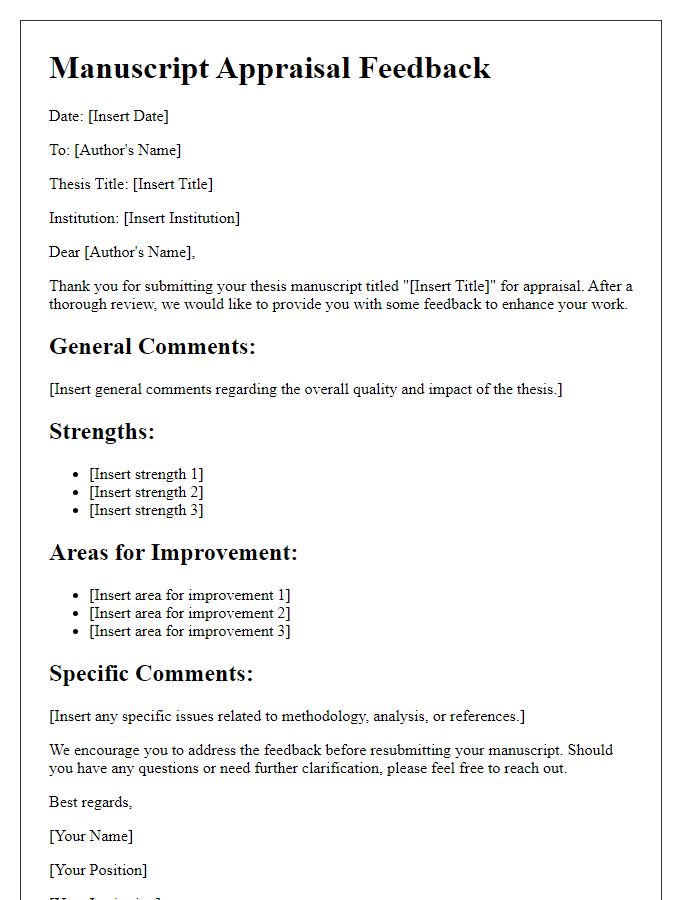
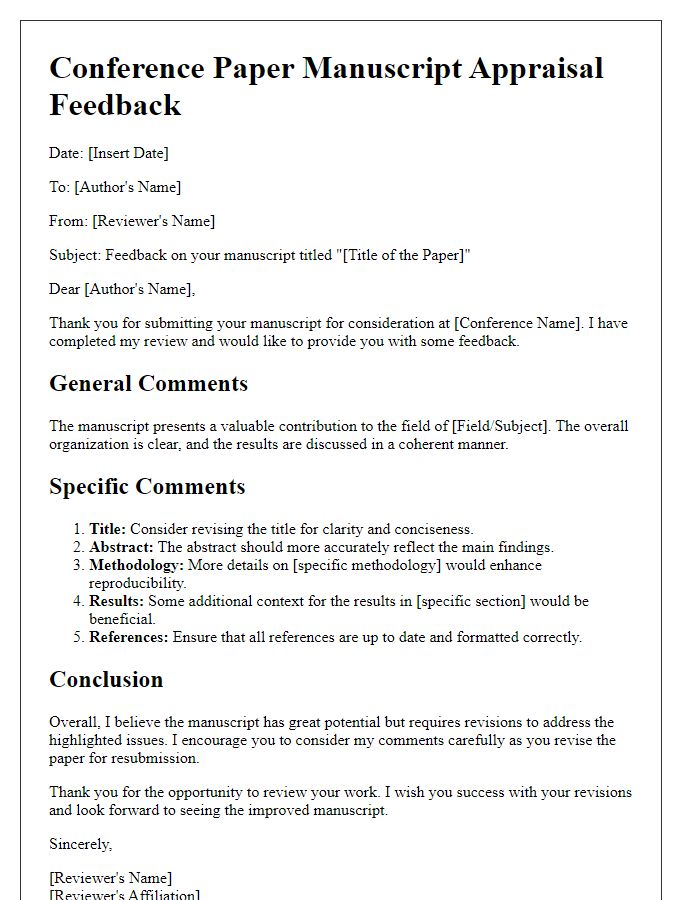
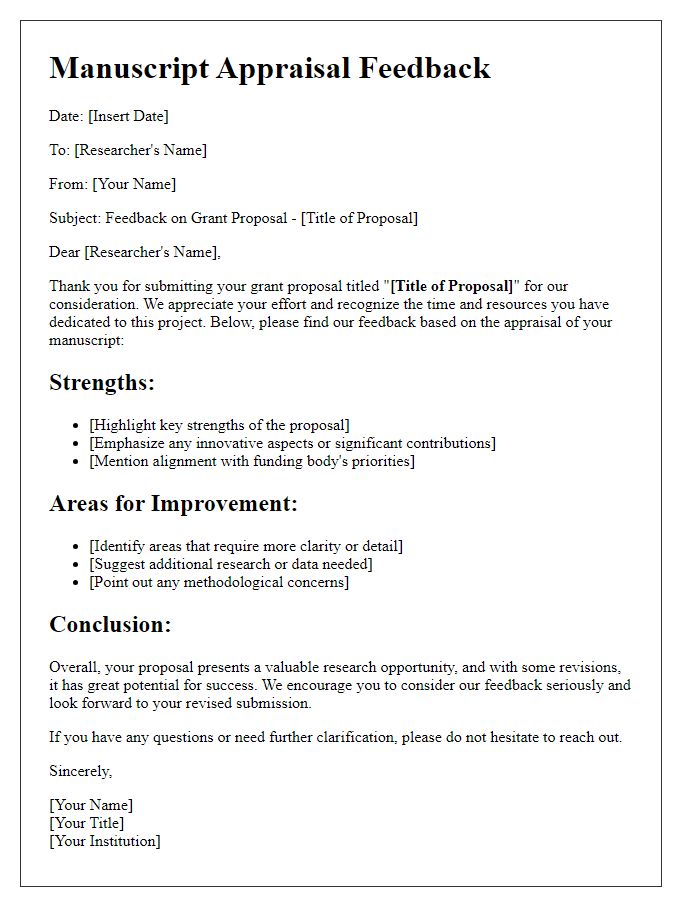
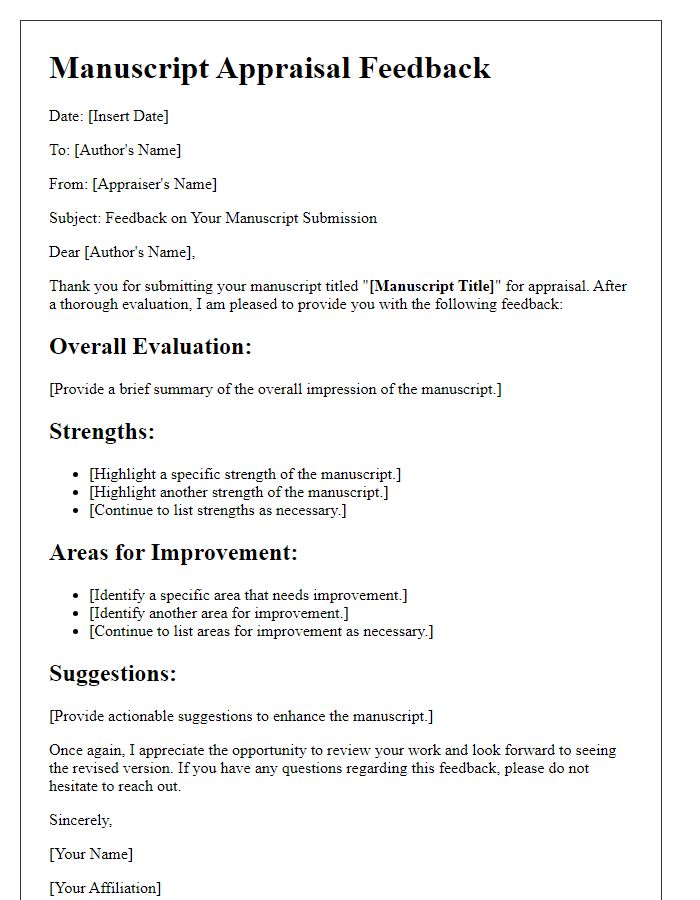
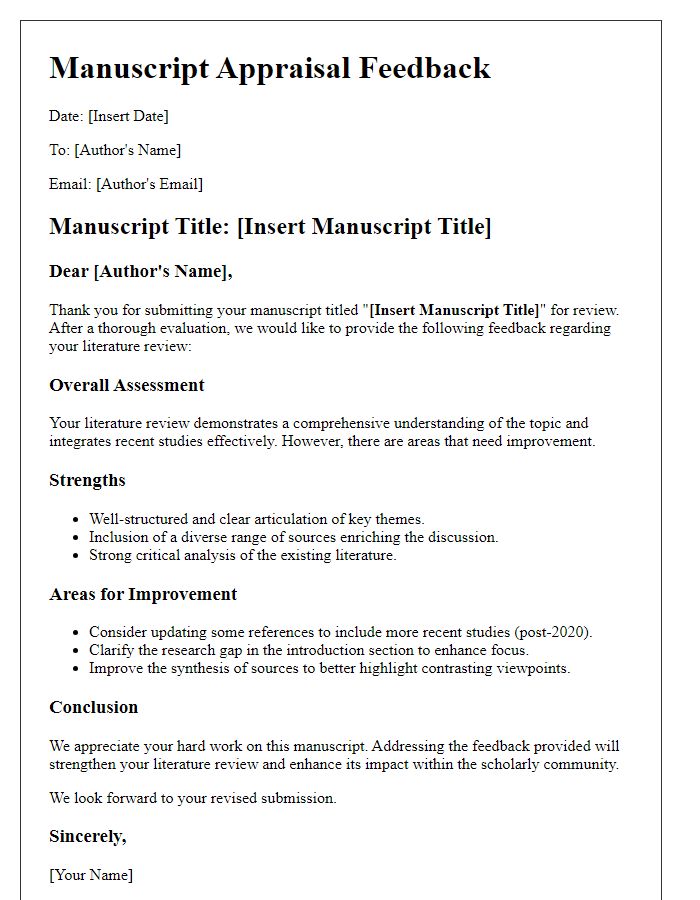
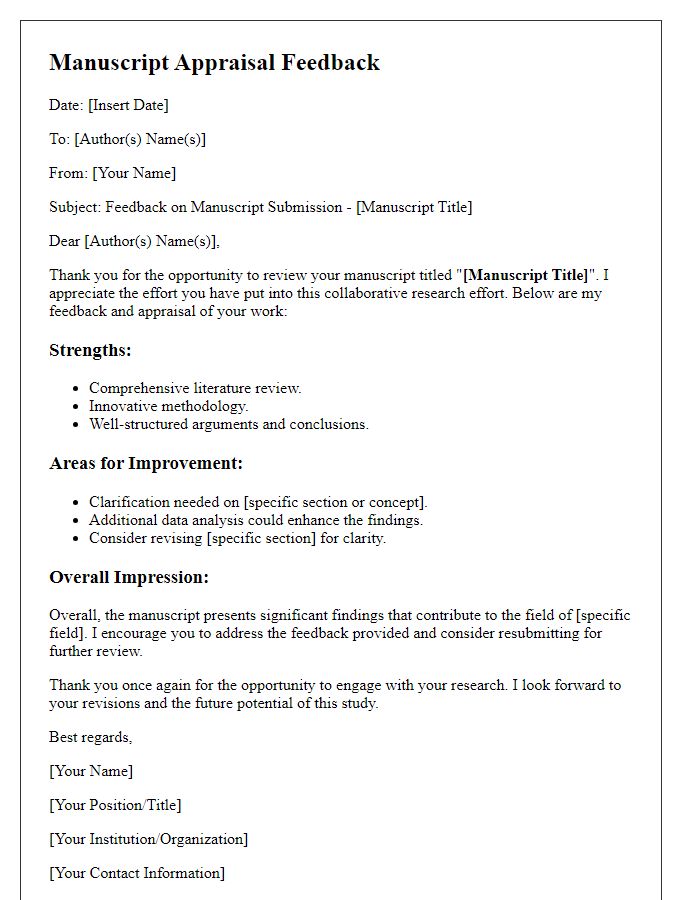

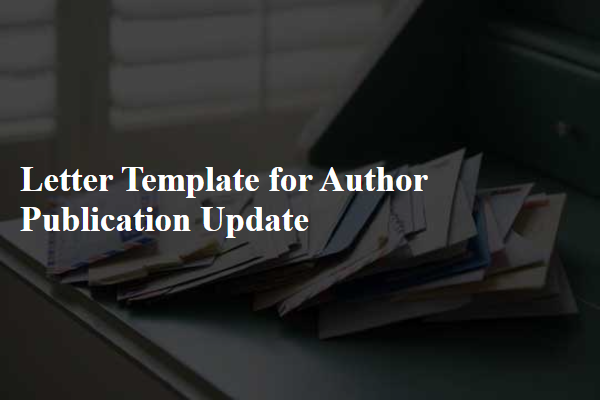
Comments